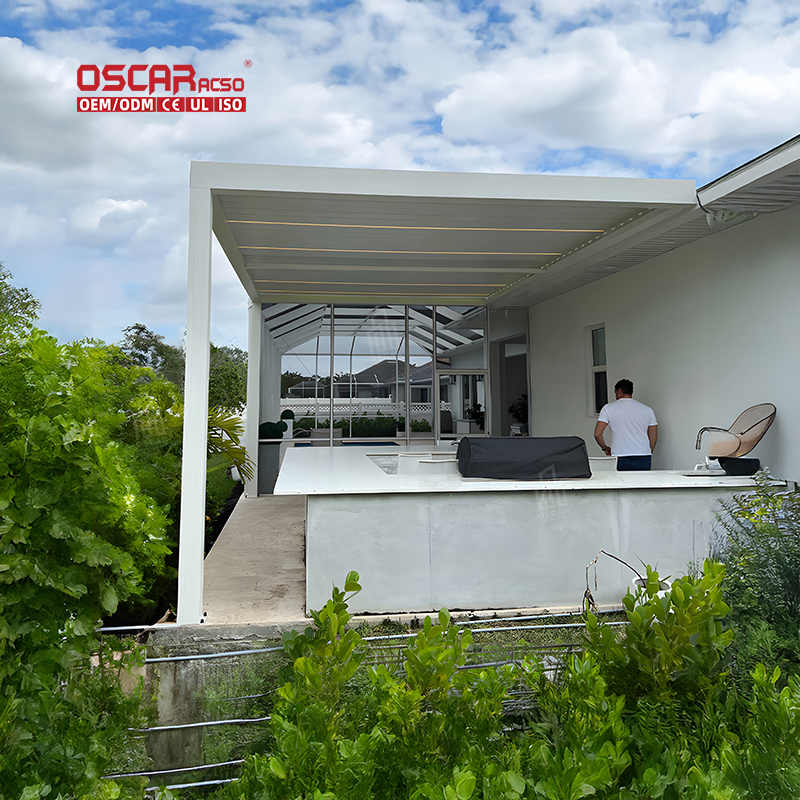Pergola Language Roots, Tracing the Word\’s Journey Across Cultures and Gardens
Ever admired a garden structure draped in climbing vines and wondered about the origin of its name? 🤔 The word pergola...
Ever admired a garden structure draped in climbing vines and wondered about the origin of its name? 🤔 The word pergola isn’t just a label for a beautiful garden feature—it’s a linguistic traveler with roots deep in European history. Let’s unravel the language story behind this beloved structure.
.jpg)
✨ The Italian Origin
The term pergola originates from the Italian word pergola, which itself derives from the Latin pergula, meaning a “projecting roof” or “arcade” . This makes perfect sense, as pergolas often feature an open, projecting roof structure supported by columns or posts.

In Italian, the word has been used since at least the mid-17th century to describe these garden structures . The Italian influence on garden design, particularly during the Renaissance, helped solidify and spread the term across Europe.
🌍 How Other Languages Embrace the Word
The journey of “pergola” across languages is a testament to its enduring design appeal. While many languages have adopted the word directly, slight variations in spelling and pronunciation exist:
- •
Spanish: Also uses pérgola (with an accent), retaining the original meaning of an architectural structure with vertical columns supporting crossbeams and an open lattice for climbing plants .
- •
French: The term is pergola, meaning a bower, arbor, or trelliswork structure in a garden .
.jpg)
- •
Portuguese: Uses pergola as well. Interestingly, the Portuguese word pérola (meaning “pearl”) is a near-homophone, which can sometimes cause playful confusion or mnemonic devices for learners, though their etymologies are distinct .
- •
German: Adopts the word as Pergola (feminine noun), referring to a similar garden structure .
This widespread adoption highlights how the pergola transcended its Italian origins to become a universally recognized architectural element in gardens worldwide.
🏛️ More Than a Word: Cultural Significance
The pergola isn’t just a linguistic import; it’s deeply woven into the cultural fabric of many regions:
- •
In Italy: The town of Pergola in the Marche region, allegedly nicknamed “the town of 100 churches,” shares its name with the structure. This town is also home to the famous Gilded Bronzes of Cartoceto .
- •
A Symbol of Performance: Florence’s Teatro della Pergola, a historic Italian theatre founded by the Medici family in 1657, derives its name from the street where it’s located. It premiered the first operas and remains a cultural landmark .
- •
Linguistic Influence: The related Spanish verb pregonar(to proclaim) hints at a deeper Latin root (preg-) associated with something being publicly visible or announced, much like a pergola often serves as a prominent, visible feature in a landscape .
🧐 Common Confusions and Clarifications
It’s easy to mix up pergolas with similar structures. Here’s a quick guide:
- •
Pergola vs. Gazebo: A gazebo is typically a freestanding, enclosed (often octagonal) structure with a solid roof. A pergola has an open, latticed roof.
- •
Pergola vs. Arbor: An arbor is usually smaller, often an arched entranceway, whereas a pergola is larger and designed to define a walkway or seating area.
- •
Pergola vs. Trellis: A trellis is a lightweight, flat panel used for supporting plants, while a pergola is a substantial, architectural framework.

Knowing these differences helps in appreciating the unique place a pergola holds in both language and landscape design.
💡 Personal Perspective: The Pergola’s Linguistic Charm
In my view, the journey of the word “pergola” mirrors the structure’s purpose: it creates connections. Just as a pergola connects different parts of a garden, the word itself connects languages and cultures. Its widespread adoption, with minimal change, suggests a shared human appreciation for shaded, green retreats.
The stability of the word’s meaning across centuries and borders is fascinating. While architectural styles evolve, the core concept of the pergola remains recognizable. This linguistic resilience might be because the structure so perfectly fulfills a universal desire—to blend the built environment with the natural, creating spaces for relaxation and social connection.
.jpg)
Furthermore, the potential for playful mix-ups, like the Portuguese pérola(pearl), adds a layer of serendipitous beauty to the word. It subtly implies that a pergola is a ”garden’s pearl”—a precious, shining feature within an outdoor space.
The word pergola is more than a term; it’s a narrative of cultural exchange, historical design, and linguistic adaptation. From Italian gardens to global landscapes, its name remains as elegant and enduring as the structure itself. Next time you relax under one, remember—you’re in a space named by history 🌿.

